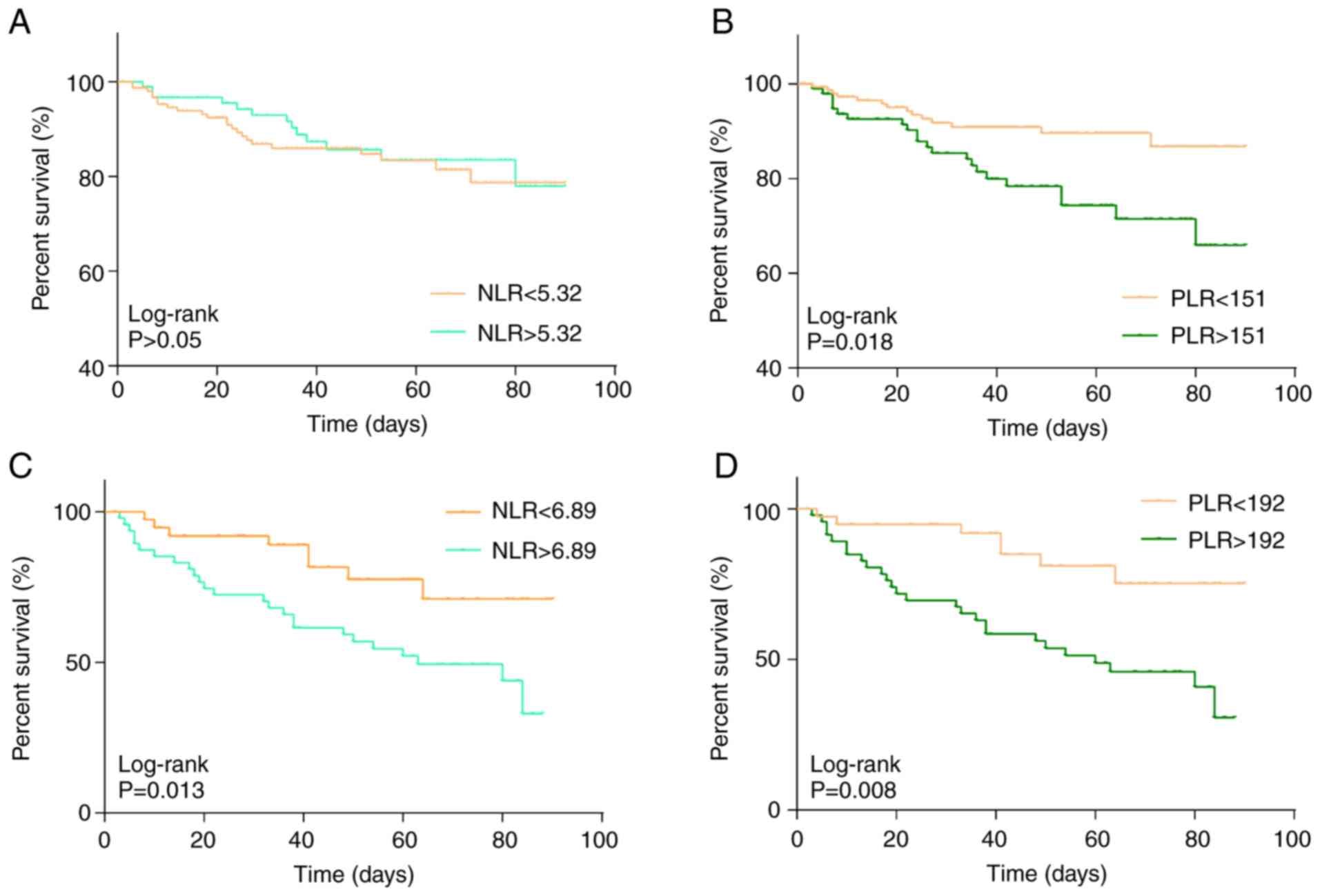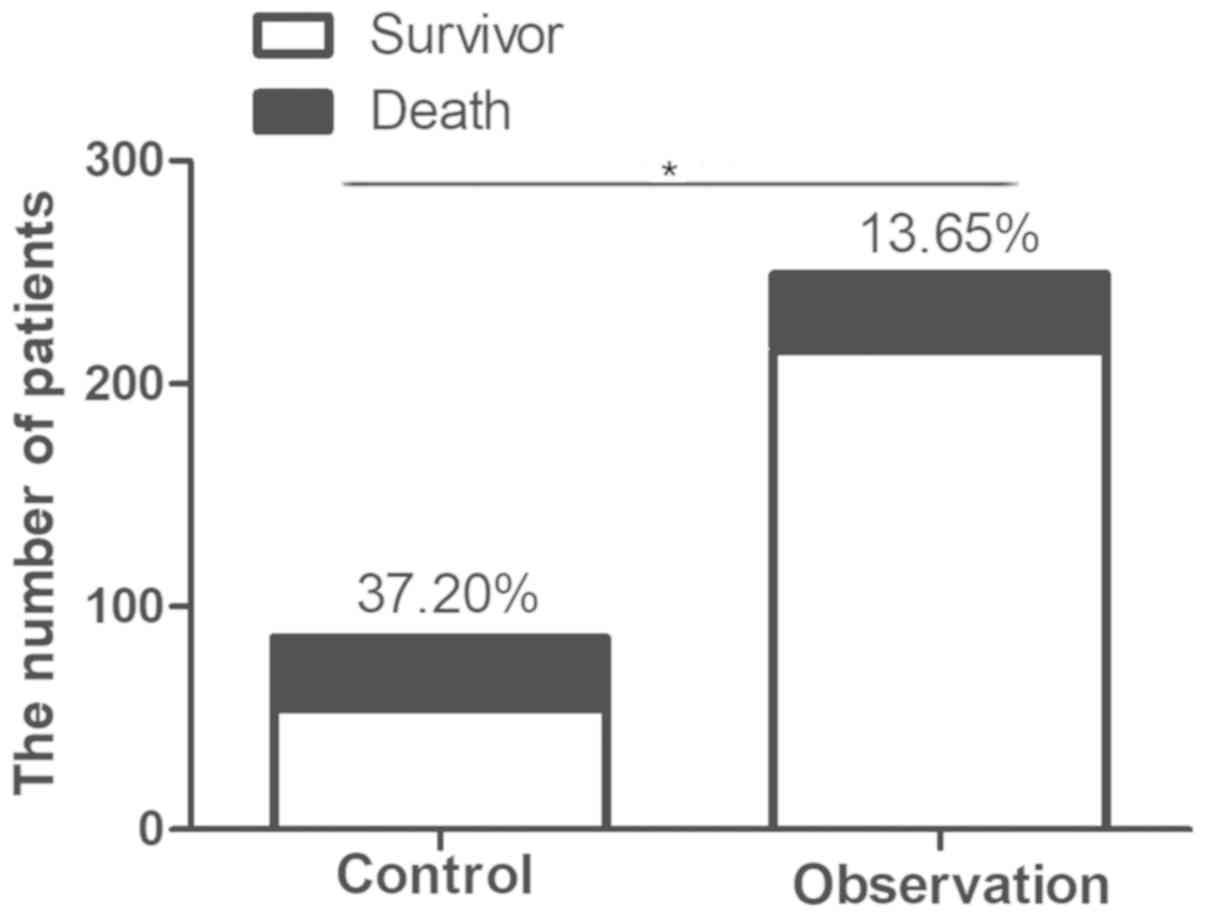Clinical significance of neutrophil to lymphocyte ratio and platelet to lymphocyte ratio in acute cerebral hemorrhage with gastrointestinal hemorrhage, and logistic regression analysis of risk factors
- Authors:
- Published online on: July 17, 2019 https://doi.org/10.3892/etm.2019.7778
- Pages: 1533-1538
Metrics:
Total
Views: 0 (Spandidos Publications: | PMC Statistics:
)
Total PDF Downloads: 0 (Spandidos Publications: | PMC Statistics:
)
Abstract
The aim of the present study was to determine the predictive value of the neutrophil to lymphocyte ratio (NLR) and platelet to lymphocyte ratio (PLR) in patients with acute cerebral hemorrhage with or without gastrointestinal hemorrhage. Risk factors of gastrointestinal hemorrhage in patients with acute cerebral hemorrhage were also assessed. A total of 335 patients with acute cerebral hemorrhage admitted to our hospital between January 2012 and January 2017 were enrolled. The 86 patients who experienced gastrointestinal hemorrhage during hospitalization were selected as the observation group, while the 249 remaining cases were assigned to the negative control group. The neutrophil, white blood cell and platelet count, as well as the NLR and PLR of each subject were recorded. Furthermore, sex, age, blood pressure, the site of cerebral hemorrhage, the amount of bleeding, the Glasgow Coma Scale (GCS) score and presence of hematosepsis were also recorded and assessed as potential risk factors for gastrointestinal hemorrhage in patients with acute cerebral hemorrhage. The NLR and PLR were markedly higher in the observation group compared with those in the negative control group. Furthermore, the NLR and PLR in the observation group were negatively associated with the 90‑day overall survival of patients with acute cerebral hemorrhage and gastrointestinal hemorrhage. In the negative control group, only the PLR was negatively associated with overall survival. Logistic regression analysis indicated that a cerebral hemorrhage volume of >30 ml, lower GCS score and hematosepsis were independently associated with gastrointestinal hemorrhage in patients with acute cerebral hemorrhage (P<0.05). A high NLR and PLR indicated an elevated risk of gastrointestinal hemorrhage in patients with acute cerebral hemorrhage. A higher NLR and PLR were also negatively associated with overall survival and prognosis of patients with cerebral hemorrhage. In addition, a cerebral hemorrhage volume of >30 ml, lower GCS score and hematosepsis were independent risk factors of gastrointestinal hemorrhage in patients with acute cerebral hemorrhage.













